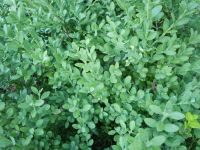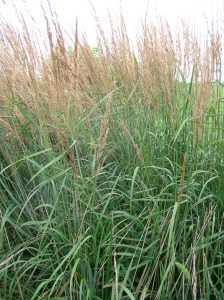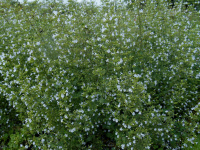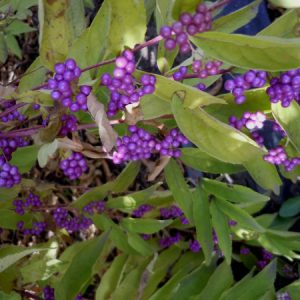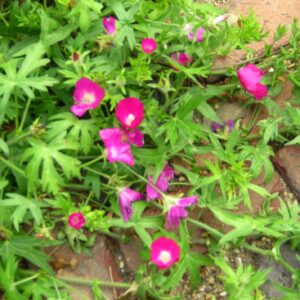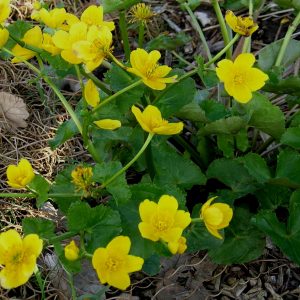Our Plants
Showing 105–112 of 616 results
-
Buxus microphylla var. koreana syn. B. sinensis var. insularis
SHRUB Boxwood
OUT OF STOCK
SHRUB Boxwood
Size: 24” x 30”
Care: Light to Part shade in well drained, alkaline soil. Do not crowd with other plants, roots prefer no competition. Fertilize regularly for dramatic growth. Prune in early spring. Unlike English boxwood this can be pruned back hard. One of a few shade tolerant evergreens and deer resistant too. Also the most hardy Boxwood.Introduced from Asia to American and European gardens around 1900 by Ernest Henry “Chinese” Wilson (1876-1930) who scoured Asia for plants.
-
Calamagrostis brachytricha Diamond grass, Feather reed grass
Arching foliage with gorgeous upright plumes
Arching foliage with gorgeous upright pale pink plumes September to November
Size: 4' x 2'
Care: sun to part shade in moist to moist well-drained soil. Deer resistant.
Native: East AsiaCollected before 1856.
-
Calamagrostis x acutiflora”Karl Forester” Feather reed grass
Completely, reliably erect grass - winner perennial plant of year award 2001.
Completely, reliably erect grass.
Size: 3-5' x 2'
Care: sun to part shade in moist to moist well-drained soil. Cut back in late winter.
Awards: Perennial Plant Association Plant of the Year 2001This is a natural cross of Calamagrostis epigeos and Calamagrostis arundinacea, natives of Asia and Europe. German nurseryman Karl Forester’s (1874-1970) keen eye spotted this in the Hamburg Botanic Garden. He listed this in his nursery catalog in 1939. Under Nazi domination he risked it all by keeping Jewish friends & workers. After WW II his nursery was the only perennial supplier in East Germany. This grass sent from Denmark to the US in 1964.
-
Calamintha nepeta ssp. nepeta syn. Clinopodium nepeta ssp. nepeta Lesser calamint Z 4-9
Profuse violet blooms on mint-scented, gray-green foliage gives frosty image, June-October
Profuse violet blooms on mint-scented, gray-green foliage gives frosty image, June-October
Size: 18-24” x 8-12”
Native: Europe and Mediterranean
Wildlife Value: attracts bees, butterflies and hummingbirdsThis subspecies 1st described by Linnaeus in 1753. Genus name comes from Greek kalos meaning beautiful and minthe meaning mint. It is not, however, a mint and is not invasive.
-
Callicarpa dichtoma Beautyberry Z 5-8
Tiny pale pink flowers in late summer turn to glossy, purple berries in fall
Tiny pale pink flowers in late summer turn to glossy, royal purple berries in fall. Grow this for the berries.
Can not ship to: Alabama.
Size: 5' x 4'
Care: Full sun to light shade in moist well-drained to well-drained soil. Prune back in early spring nearly to ground.
Native: China and Japan
Awards: Pennsylvania Horticultural Society Gold Medal Plant Award.Collected for gardens before 1800.
**LISTED AS OUT OF STOCK BECAUSE WE DO NOT SHIP THIS ITEM. IT IS AVAILABLE FOR PURCHASE AT OUR RETAIL LOCATION.
-
Callirhoe digitata Finger poppy mallow Z 5-8
Purple-red cups wave atop leafless stems all summer.
OUT OF STOCK – EMAIL FOR AVAILABILITY
Purple-red cups wave atop leafless stems all summer.
Size: 1-3’ x 1’
Care: full sun in moist well-drained soil
Native: Missouri and Kansas to Arkansas & TexasCallirhoe is named for the goddess Callirhoe, daughter of Hermocrates, the Greek river god. Digitata means shaped like an open hand (digits = fingers). First collected by Englishman Thomas Nuttall, trained as a printer, turned extraordinary plant hunter who looked for plants from the east coast throughout the Midwest, Arkansas, Florida, to the Pacific Northwest and Hawaii (1786-1859).
-
Callirhoe involucrata Wine cups, Prairie poppy mallow
Magenta-purple upfacing cups, June - October
Magenta-purple upfacing cups, June – October, non-stop. Wonderful for rock gardens or as a ground cover.
Size: 6" x 12"
Care: Full sun in well-drained soil. Drought tolerant
Native: Missouri to TexasAlthough an American prairie native, Callirhoe is named for the daughter of the Greek river god. Teton Dakota burned its dried root for smoke to cure the common cold and aches and pains. First collected by Thomas Nuttall in 1834. Ferry’s 1876 catalog described it as having “a trailing habit, of great beauty.” William Robinson extolled Prairie mallow as “excellent for the rock garden, bearing a continuous crop of showy blossoms from early summer till late in autumn.”
-
Caltha palustris Marsh marigold, Kingscup Zones 3-7
Finch yellow buttercups in early spring top round, kidney-shaped foliage
Finch yellow buttercups in early spring top round, kidney-shaped foliage
Size: 12-18” x 12-18”
Care: sun to part shade in moist, acidic soil
Native: Maine to No. Dakota S. to Tennessee
Wildlife Value: Attracts birds
Size: Caltha is Latin meaning “cup” and palustris means “boggy” or “marsh.” America’s 1st people used the roots medicinally to cure colds and sores and to induce vomiting. The roots also protected against “love charms,” (but I suspect the vomiting might have accomplished that.) An infusion of leaves remedied constipation.Introduced to Europe very early and memorialized in Chaucer’s poetry, 1549. Grown in the Eichstätt Garden, the garden of Johann Konrad von Gemmingen, prince bishop of Eichstätt in Bavaria, c. 1600.
LH Bailey considered the flowers “very beautiful,” while Rand called them “very showy.” Wm. Robinson described them as “shin(ing) like fires in swamps and hollows.” Pressed specimen in Emily Dickinson’s herbarium.

